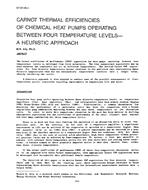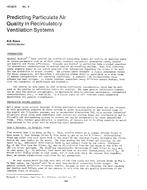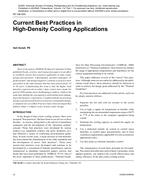High-performance glazing systems incorporate low-emissivity coating on glass, heavy gas fill in the glazing cavity, and thermally improved spacer bars instead of the conventional metal bars. The improved design and proper selection of material for spacer bars provide means to improve the overall thermal characteristics and condensation resistance of windows, particularly in the edge-of-glass region. Experimental results showed that there is an interaction between the spacer bar and sash/frame material of the window assembly that affects the overall performance of the fenestration products.
In an effort to investigate the interaction between the spacer bar design and frame/sash material on the thermal performance of windows, a series of tests were performed on a number of windows in a controlled environment (e.g., laboratory testing). In an earlier study, a summary of the experimental setup and the results of testing small insulating glass (IG) units was presented to report the surface temperature distribution and condensation resistance of a set of IG units in the absence of framing material. Ten spacer bars, including conventional metal spacer, hybrid system, silicon foam, and thermally broken bars, were included in that set of IG units. The later spacer bars, were referred to as warm edge technology (WET) bars. The full documentation of that part of the study was published in Elmahdy (2002).
In this paper, the results of investigating the thermal coupling effects and the interaction between the spacer bar and the window sash/frame material of a number of different spacer bar designs and frame material are summarized. The same spacer bars reported in the earlier study are included in this paper. Framing materials (wood, vinyl, aluminum, and glass fiber) were used to study the combined effect of spacer bar design and frame material on the overall window performance.
The test results showed that the use of WET spacer bars demonstrated higher glass surface temperature in the edge-ofglass region, improving the condensation resistance and the overall R-value of the fenestration products relative to windows made with conventional metal spacers. There exist some combinations of certain spacer bar designs and frame material that produce favorable performance. However, it is important not to generalize the reported results due to the many varieties in frame designs and profiles that would have greater impact on the final results. On the other hand, these results provide clear indications of the interaction between spacer bar design and the frame material on the overall thermal performance of windows. As an added benefit, window designers have options to produce windows of a wide range of performance factors to meet the demands for different applications and consumers’ preferences.
Citation: ASHRAE Trans. vol. 112, pt. 2, paper no. QC-06-004, p. 30-43
Product Details
- Published:
- 2006
- Number of Pages:
- 14
- File Size:
- 1 file , 790 KB
- Product Code(s):
- D-28725


